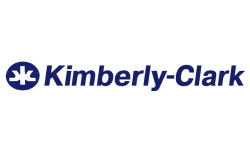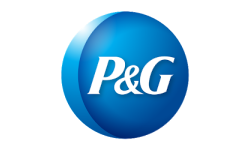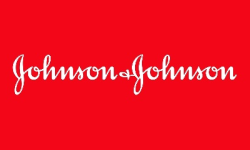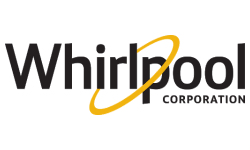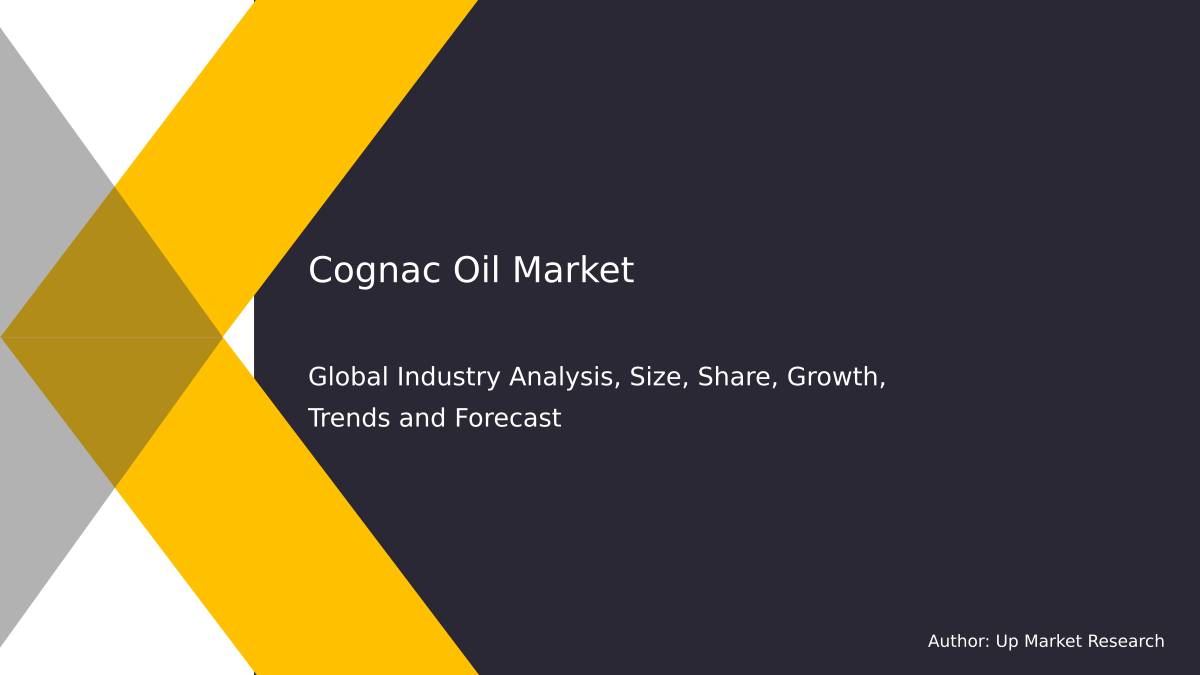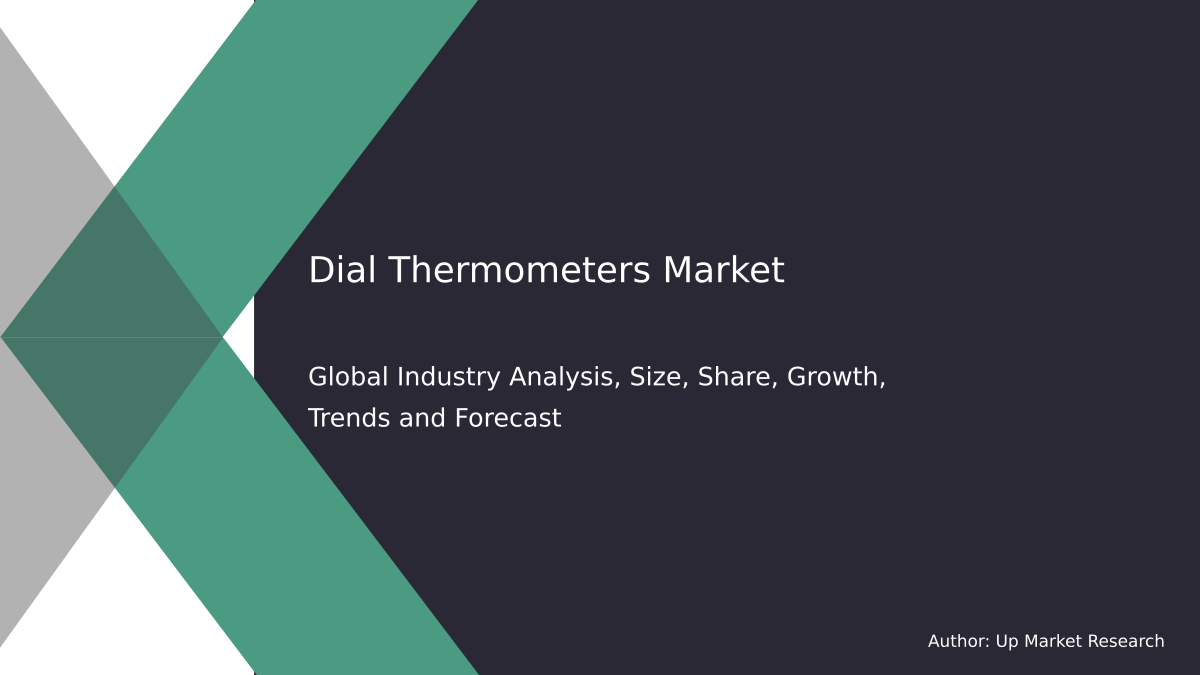
Global Dextrose Anhydrous Market by Type (Crystalline, Powder, Liquid And Syrup), By Application (Food, Pharmaceutical, Beverage, Animal Feed And Pet Food, Chemical Processes, Fermentation) and Region (North America, Latin America, Europe, Asia Pacific and Middle East & Africa), Forecast To 2028
The global dextrose anhydrous market size is projected to reach USD 1.2 billion by 2028. The demand for dextrose anhydrous from the food industry is on the rise, with application in cereals making up the largest share of revenue generated globally, and it will continue to do so over the forecast period.
Dextrose anhydrous, also known as "anhydrous dextrose" or "d-glucose", is white crystalline sugar that has been dehydrated. The molecules in the crystals are tightly bonded to one another, which makes them resistant to moisture and heat fluctuations and enables them to be stored for longer periods of time without risking spoilage. It can have either a sweet taste similar to caramelized sugars or no taste at all. This type of sugar is used in many foods such as baked goods, soft drinks, confectioneries (such as chocolates), jams/jellies/syrups, dairy desserts (ice cream), etc., pharmaceutics industry products like tablets and capsules; as a sweetener in the brewing process for beer, and as an animal feed additive.
Dextrose is produced by catalyzing glucose through chemical or biological processes, which can also include fermentation with bacteria/yeast under specific conditions to produce industrial dextrose (not consumed). The main difference between it and other sugars like sucrose, fructose, and lactose is that it does not have any mutarotation - this means its molecules won't change their orientation when they are heated or cooled. Its crystalline structure makes it resistant against moisture fluctuations but sensitive to high temperatures up to 160 degrees Celsius where it will start caramelizing. Dextrose has no taste at all; however liquid dextroses do have tastes that range from sweetness to a slightly sour taste, and it's often used as an additive to create the desired flavor.
On the basis of type, dextrose anhydrous is segmented into crystalline, powder, liquid, and syrup.
Crystalline
Crystalline dextrose anhydrous is a form of glucose that has undergone heating and drying to produce a white, crystallized solid. It can be industrial or pharmaceutical grade with the latter requiring strict quality standards for food safety reasons. Crystalline Dextrose AnnHydrous typically contains 98% pure dry solids and cannot contain more than 0.05% moisture in its composition as per FDA regulations.
Powder
Dextrose Powder is also used as a food additive in the form of fast-acting carbohydrate to provide energy or nutritive sustenance (as well as bulk) to individuals who need it because they have had major illnesses such as surgery; are malnourished due to gastrointestinal illness such as Crohn's disease, or are bedridden with chronic ailments like severe burns. Powdered dextrose supplements may be taken by mouth without water on empty stomachs, mixed into drinks, added to foods/beverages either at the table or in the kitchen and blended into liquid nutritional supplements. Powdered dextrose anhydrous may act as a bulking agent to thicken soups or sauces without adding fat content if mixed with water before use.
Liquid
The liquid form of dextrose anhydrous is typically used in the production of wine, beer, and other alcoholic drinks where it is added to provide a desired level of sweetness. It can also be used as an additive for food products like soy sauce or salad dressing with applications in pharmaceuticals and chemical processes such as making viscous fluids that are thicker than water-based liquids by using high viscosity. In fermentation, liquid dextrose anhydrous helps maintain yeast activity for long periods of time without adding more sugar.
Syrup
The syrup form of dextrose anhydrous is a thick and viscous liquid. It can easily be converted into powder or crystalline forms, but it also has its own benefits as well. The syrup form does not have any risk of clumping together during production which means that it will often stay suspended in the solution or product much better than other forms such as crystalized sugar would. Whereas this benefit may seem small on paper, there are many products where suspending particles within the mixture is crucial to the quality of end result. Syrup-based ingredients like dextrose anhydrous are key components for food processing companies that produce bakery goods with fruit fillings or chocolate desserts because they help keep all these layers intact without them breaking apart. The syrup form tends to have a milder flavor than the crystalline or powder forms because it contains less glucose (typically 90%).
On the basis of application, dextrose anhydrous is segmented into food and beverages; pharmaceuticals; animal feed & pet food; chemical processes & fermentation.
Food and Beverages
Dextrose is used in the food and beverages industry as a sweetener. It can be used to replace sugar or corn syrup that is not deemed healthy for daily consumption, due to its high concentrations of fructose and glucose. Dextrose is also an important ingredient for beer brewing, with some variations on the type of yeast added during fermentation affecting whether dextrose will result in a dryer or sweeter product (depending on how much water it contains).
Dextrose is a sugar that can be found in many common food products such as honey, jam, and jelly. It does not contain any minerals so it's usually combined with other sugars or sweeteners to make the taste more complex. Dextrose is used in diet soda drinks because of its low-calorie content which makes it perfect for those who are conscious about their weight gain.
Pharmaceuticals
In pharmaceuticals, dextrose is used in the production of tablets. It also has some application as a buffer for medical gases and intravenous solutions. It's an ingredient in oral rehydration salts for diarrhea treatment. Dextrose Anhydrous is used as a stabilizer in pharmaceuticals and often for the production of medicines such as antibiotics that require dry-powder preparations. Dextrose Powder can also be found inside tampons due to its natural absorbent properties. It's often coated with polyacrylate glycol which gives dextrose an extended shelf life when applied topically on wounds and burns.
Animal Feed and Pet Food
The main application of dextrose anhydrous in animal feed is to provide energy and carbohydrate. Animal feeds are formulated according to the nutrient requirements for different types of animals, depending on their age, species, or size. For example, poultry can be given either a starter diet or grower-finisher feed; chicks require higher levels of protein than adults because they are still growing; pigs require high quantities of fiber as well as much more calcium than other livestock. The type and quantity will vary with each particular animal's physiological needs but all variations will contain carbohydrates such as sugars including dextrose anhydrous. Dextrose anhydrous is used in pet food as a nutritional supplement. It provides the animal with glucose which it can use for energy or convert to glycogen and also assists in bodybuilding and tissue repair.
Chemical Processes
In chemical processes, Dextrose anhydrous is mainly applied as a source of sugar for fermentation that produces alcohols such as butanol (and other chemicals). In fermentations, The most common use of dextrose in the fermentation process is turning it into lactic or citric acids which are then used in pharmaceuticals and foods.
On the basis of region, the global dextrose anhydrous market is segmented into North America, Latin America, Europe, Asia Pacific, and the Middle East & Africa.
Europe emerged as a major market for all types of dextrose anhydrous in 2016 due to its steady economic growth coupled with high demand from the pharmaceuticals sector. The region accounted for more than 24% share of total revenue generated by the global dextrose anhydrous industry.
North America's dextrose anhydrous market is projected to be the largest in North America, with a share of 43.42% during 2016-2028. Canada was the largest exporter and importer of dextrose powder in 2014 among countries in this region; as such it plays a major role in global trade for dextrose anhydrous worldwide, accounting for more than 34% of exports from these nations globally. It also dominates imports at 37%. The United States has been ranked second after Canada by volume export (14%) while Mexico stands third exporting about 12% of total volumes exported out of North American regions.
Latin America had the highest growth rate CAGR (compound annual growth rate) over 2010 -2016. The dextrose anhydrous market in Latin America is projected to grow at a CAGR of 12.03% during 2016-2028, which can be attributed to the increasing demand for food products and key players involved in distribution across this region that include Brazil, Chile, Mexico, and Argentina.
The Asia Pacific Dextrose Anhydrous Market accounted for 31% share of the global volume export with major exporters being Malaysia as well as Thailand. China was the largest importer followed by India; these two countries together contributed about 63% of imports from this region globally over the 2014-2016 periods when considering volumes imported into other regions excluding the North American region.
Growth Factors
The global dextrose anhydrous market is predominantly driven by the growing application in the food and beverage industry. Dextrose is widely used as a sugar substitute for sweetening purposes, especially in diet sodas to avoid the calories usually associated with high-calorie beverages which are loaded with sugars or artificial sweeteners. It is also used as a bulking agent that can be added to baked goods to increase their volume without adding any significant amount of fat or carbohydrates. Apart from this, this product is inexpensive and available globally through different trade channels increases its popularity among consumers who want to save money and make healthier choices by opting for it over other alternative products such as cane sugar, corn syrup solids (HFCS), sucralose, etc.
Up Market Research published a new report titled “Dextrose Anhydrous Market research report which is segmented by Types (Crystalline, Powder, Liquid And Syrup), By Applications (Food, Pharmaceutical, Beverage, Animal Feed And Pet Food, Chemical Processes, Fermentation), By Players/Companies Cargill, Fisher Scientific, BANGYE, Rouqette, Sigma Aldrich, Orion Infusion, Foodchem, Demo”. As per the study, the market is expected to grow at a CAGR of XX% in the forecast period.
Report Scope
| Report Attributes | Report Details |
| Report Title | Dextrose Anhydrous Market Research Report |
| By Type | Crystalline, Powder, Liquid And Syrup |
| By Application | Food, Pharmaceutical, Beverage, Animal Feed And Pet Food, Chemical Processes, Fermentation |
| By Companies | Cargill, Fisher Scientific, BANGYE, Rouqette, Sigma Aldrich, Orion Infusion, Foodchem, Demo |
| Regions Covered | North America, Europe, APAC, Latin America, MEA |
| Base Year | 2020 |
| Historical Year | 2018 to 2019 (Data from 2010 can be provided as per availability) |
| Forecast Year | 2028 |
| Number of Pages | 249 |
| Number of Tables & Figures | 175 |
| Customization Available | Yes, the report can be customized as per your need. |
The report covers comprehensive data on emerging trends, market drivers, growth opportunities, and restraints that can change the market dynamics of the industry. It provides an in-depth analysis of the market segments which include products, applications, and competitor analysis.

Global Dextrose Anhydrous Market Report Segments:
The market is segmented by Type Crystalline, Powder, Liquid And Syrup and By Application Food, Pharmaceutical, Beverage, Animal Feed And Pet Food, Chemical Processes, Fermentation.
Some of the companies that are profiled in this report are:
- Cargill
- Fisher Scientific
- BANGYE
- Rouqette
- Sigma Aldrich
- Orion Infusion
- Foodchem
- Demo
Dextrose Anhydrous Market research report delivers a close watch on leading competitors with strategic analysis, micro and macro market trend and scenarios, pricing analysis and a holistic overview of the market situations in the forecast period. It is a professional and a detailed report focusing on primary and secondary drivers, market share, leading segments and geographical analysis. Further, key players, major collaborations, merger & acquisitions along with trending innovation and business policies are reviewed in the report.
Key Benefits for Industry Participants & Stakeholders:
- Industry drivers, restraints, and opportunities covered in the study
- Neutral perspective on the market performance
- Recent industry trends and developments
- Competitive landscape & strategies of key players
- Potential & niche segments and regions exhibiting promising growth covered
- Historical, current, and projected market size, in terms of value
- In-depth analysis of the Dextrose Anhydrous Market
Overview of the regional outlook of the Dextrose Anhydrous Market:
Based on region, the market is segmented into North America, Europe, Asia Pacific, Latin America and Middle East & Africa (MEA). North America region is further bifurcated into countries such as U.S., and Canada. The Europe region is further categorized into U.K., France, Germany, Italy, Spain, Russia, and Rest of Europe. Asia Pacific is further segmented into China, Japan, South Korea, India, Australia, South East Asia, and Rest of Asia Pacific. Latin America region is further segmented into Brazil, Mexico, and Rest of Latin America, and the MEA region is further divided into GCC, Turkey, South Africa, and Rest of MEA.

Highlights of The Dextrose Anhydrous Market Report:
- The market structure and projections for the coming years.
- Drivers, restraints, opportunities, and current trends of Dextrose Anhydrous Market.
- Historical data and forecast.
- Estimations for the forecast period 2028.
- Developments and trends in the market.
- By Type:
1. Crystalline
2. Powder
3. Liquid And Syrup
7. By Application:1. Food
2. Pharmaceutical
3. Beverage
4. Animal Feed And Pet Food
5. Chemical Processes
6. Fermentation
- Market scenario by region, sub-region, and country.
- Market share of the market players, company profiles, product specifications, SWOT analysis, and competitive landscape.
- Analysis regarding upstream raw materials, downstream demand, and current market dynamics.
- Government Policies, Macro & Micro economic factors are also included in the report.
We have studied the Dextrose Anhydrous Market in 360 degrees via. both primary & secondary research methodologies. This helped us in building an understanding of the current market dynamics, supply-demand gap, pricing trends, product preferences, consumer patterns & so on. The findings were further validated through primary research with industry experts & opinion leaders across countries. The data is further compiled & validated through various market estimation & data validation methodologies. Further, we also have our in-house data forecasting model to predict market growth up to 2028.
How you may use our products:
- Correctly Positioning New Products
- Market Entry Strategies
- Business Expansion Strategies
- Consumer Insights
- Understanding Competition Scenario
- Product & Brand Management
- Channel & Customer Management
- Identifying Appropriate Advertising Appeals

Reasons to Purchase the Dextrose Anhydrous Market Report:
- The report includes a plethora of information such as market dynamics scenario and opportunities during the forecast period
- Segments and sub-segments include quantitative, qualitative, value (USD Million,) and volume (Units Million) data.
- Regional, sub-regional, and country level data includes the demand and supply forces along with their influence on the market.
- The competitive landscape comprises share of key players, new developments, and strategies in the last three years.
- Comprehensive companies offering products, relevant financial information, recent developments, SWOT analysis, and strategies by these players.
Chapter 2 Assumptions and Acronyms Used
Chapter 3 Research Methodology
Chapter 4 Dextrose Anhydrous Market Overview
4.1 Introduction
4.1.1 Market Taxonomy
4.1.2 Market Definition
4.1.3 Macro-Economic Factors Impacting the Market Growth
4.2 Dextrose Anhydrous Market Dynamics
4.2.1 Market Drivers
4.2.2 Market Restraints
4.2.3 Market Opportunity
4.3 Dextrose Anhydrous Market - Supply Chain Analysis
4.3.1 List of Key Suppliers
4.3.2 List of Key Distributors
4.3.3 List of Key Consumers
4.4 Key Forces Shaping the Dextrose Anhydrous Market
4.4.1 Bargaining Power of Suppliers
4.4.2 Bargaining Power of Buyers
4.4.3 Threat of Substitution
4.4.4 Threat of New Entrants
4.4.5 Competitive Rivalry
4.5 Global Dextrose Anhydrous Market Size & Forecast, 2018-2028
4.5.1 Dextrose Anhydrous Market Size and Y-o-Y Growth
4.5.2 Dextrose Anhydrous Market Absolute $ Opportunity
Chapter 5 Global Dextrose Anhydrous Market Analysis and Forecast by Type
5.1 Introduction
5.1.1 Key Market Trends & Growth Opportunities by Type
5.1.2 Basis Point Share (BPS) Analysis by Type
5.1.3 Absolute $ Opportunity Assessment by Type
5.2 Dextrose Anhydrous Market Size Forecast by Type
5.2.1 Crystalline
5.2.2 Powder
5.2.3 Liquid And Syrup
5.3 Market Attractiveness Analysis by Type
Chapter 6 Global Dextrose Anhydrous Market Analysis and Forecast by Applications
6.1 Introduction
6.1.1 Key Market Trends & Growth Opportunities by Applications
6.1.2 Basis Point Share (BPS) Analysis by Applications
6.1.3 Absolute $ Opportunity Assessment by Applications
6.2 Dextrose Anhydrous Market Size Forecast by Applications
6.2.1 Food
6.2.2 Pharmaceutical
6.2.3 Beverage
6.2.4 Animal Feed And Pet Food
6.2.5 Chemical Processes
6.2.6 Fermentation
6.3 Market Attractiveness Analysis by Applications
Chapter 7 Global Dextrose Anhydrous Market Analysis and Forecast by Region
7.1 Introduction
7.1.1 Key Market Trends & Growth Opportunities by Region
7.1.2 Basis Point Share (BPS) Analysis by Region
7.1.3 Absolute $ Opportunity Assessment by Region
7.2 Dextrose Anhydrous Market Size Forecast by Region
7.2.1 North America
7.2.2 Europe
7.2.3 Asia Pacific
7.2.4 Latin America
7.2.5 Middle East & Africa (MEA)
7.3 Market Attractiveness Analysis by Region
Chapter 8 Coronavirus Disease (COVID-19) Impact
8.1 Introduction
8.2 Current & Future Impact Analysis
8.3 Economic Impact Analysis
8.4 Government Policies
8.5 Investment Scenario
Chapter 9 North America Dextrose Anhydrous Analysis and Forecast
9.1 Introduction
9.2 North America Dextrose Anhydrous Market Size Forecast by Country
9.2.1 U.S.
9.2.2 Canada
9.3 Basis Point Share (BPS) Analysis by Country
9.4 Absolute $ Opportunity Assessment by Country
9.5 Market Attractiveness Analysis by Country
9.6 North America Dextrose Anhydrous Market Size Forecast by Type
9.6.1 Crystalline
9.6.2 Powder
9.6.3 Liquid And Syrup
9.7 Basis Point Share (BPS) Analysis by Type
9.8 Absolute $ Opportunity Assessment by Type
9.9 Market Attractiveness Analysis by Type
9.10 North America Dextrose Anhydrous Market Size Forecast by Applications
9.10.1 Food
9.10.2 Pharmaceutical
9.10.3 Beverage
9.10.4 Animal Feed And Pet Food
9.10.5 Chemical Processes
9.10.6 Fermentation
9.11 Basis Point Share (BPS) Analysis by Applications
9.12 Absolute $ Opportunity Assessment by Applications
9.13 Market Attractiveness Analysis by Applications
Chapter 10 Europe Dextrose Anhydrous Analysis and Forecast
10.1 Introduction
10.2 Europe Dextrose Anhydrous Market Size Forecast by Country
10.2.1 Germany
10.2.2 France
10.2.3 Italy
10.2.4 U.K.
10.2.5 Spain
10.2.6 Russia
10.2.7 Rest of Europe
10.3 Basis Point Share (BPS) Analysis by Country
10.4 Absolute $ Opportunity Assessment by Country
10.5 Market Attractiveness Analysis by Country
10.6 Europe Dextrose Anhydrous Market Size Forecast by Type
10.6.1 Crystalline
10.6.2 Powder
10.6.3 Liquid And Syrup
10.7 Basis Point Share (BPS) Analysis by Type
10.8 Absolute $ Opportunity Assessment by Type
10.9 Market Attractiveness Analysis by Type
10.10 Europe Dextrose Anhydrous Market Size Forecast by Applications
10.10.1 Food
10.10.2 Pharmaceutical
10.10.3 Beverage
10.10.4 Animal Feed And Pet Food
10.10.5 Chemical Processes
10.10.6 Fermentation
10.11 Basis Point Share (BPS) Analysis by Applications
10.12 Absolute $ Opportunity Assessment by Applications
10.13 Market Attractiveness Analysis by Applications
Chapter 11 Asia Pacific Dextrose Anhydrous Analysis and Forecast
11.1 Introduction
11.2 Asia Pacific Dextrose Anhydrous Market Size Forecast by Country
11.2.1 China
11.2.2 Japan
11.2.3 South Korea
11.2.4 India
11.2.5 Australia
11.2.6 South East Asia (SEA)
11.2.7 Rest of Asia Pacific (APAC)
11.3 Basis Point Share (BPS) Analysis by Country
11.4 Absolute $ Opportunity Assessment by Country
11.5 Market Attractiveness Analysis by Country
11.6 Asia Pacific Dextrose Anhydrous Market Size Forecast by Type
11.6.1 Crystalline
11.6.2 Powder
11.6.3 Liquid And Syrup
11.7 Basis Point Share (BPS) Analysis by Type
11.8 Absolute $ Opportunity Assessment by Type
11.9 Market Attractiveness Analysis by Type
11.10 Asia Pacific Dextrose Anhydrous Market Size Forecast by Applications
11.10.1 Food
11.10.2 Pharmaceutical
11.10.3 Beverage
11.10.4 Animal Feed And Pet Food
11.10.5 Chemical Processes
11.10.6 Fermentation
11.11 Basis Point Share (BPS) Analysis by Applications
11.12 Absolute $ Opportunity Assessment by Applications
11.13 Market Attractiveness Analysis by Applications
Chapter 12 Latin America Dextrose Anhydrous Analysis and Forecast
12.1 Introduction
12.2 Latin America Dextrose Anhydrous Market Size Forecast by Country
12.2.1 Brazil
12.2.2 Mexico
12.2.3 Rest of Latin America (LATAM)
12.3 Basis Point Share (BPS) Analysis by Country
12.4 Absolute $ Opportunity Assessment by Country
12.5 Market Attractiveness Analysis by Country
12.6 Latin America Dextrose Anhydrous Market Size Forecast by Type
12.6.1 Crystalline
12.6.2 Powder
12.6.3 Liquid And Syrup
12.7 Basis Point Share (BPS) Analysis by Type
12.8 Absolute $ Opportunity Assessment by Type
12.9 Market Attractiveness Analysis by Type
12.10 Latin America Dextrose Anhydrous Market Size Forecast by Applications
12.10.1 Food
12.10.2 Pharmaceutical
12.10.3 Beverage
12.10.4 Animal Feed And Pet Food
12.10.5 Chemical Processes
12.10.6 Fermentation
12.11 Basis Point Share (BPS) Analysis by Applications
12.12 Absolute $ Opportunity Assessment by Applications
12.13 Market Attractiveness Analysis by Applications
Chapter 13 Middle East & Africa (MEA) Dextrose Anhydrous Analysis and Forecast
13.1 Introduction
13.2 Middle East & Africa (MEA) Dextrose Anhydrous Market Size Forecast by Country
13.2.1 Saudi Arabia
13.2.2 South Africa
13.2.3 UAE
13.2.4 Rest of Middle East & Africa (MEA)
13.3 Basis Point Share (BPS) Analysis by Country
13.4 Absolute $ Opportunity Assessment by Country
13.5 Market Attractiveness Analysis by Country
13.6 Middle East & Africa (MEA) Dextrose Anhydrous Market Size Forecast by Type
13.6.1 Crystalline
13.6.2 Powder
13.6.3 Liquid And Syrup
13.7 Basis Point Share (BPS) Analysis by Type
13.8 Absolute $ Opportunity Assessment by Type
13.9 Market Attractiveness Analysis by Type
13.10 Middle East & Africa (MEA) Dextrose Anhydrous Market Size Forecast by Applications
13.10.1 Food
13.10.2 Pharmaceutical
13.10.3 Beverage
13.10.4 Animal Feed And Pet Food
13.10.5 Chemical Processes
13.10.6 Fermentation
13.11 Basis Point Share (BPS) Analysis by Applications
13.12 Absolute $ Opportunity Assessment by Applications
13.13 Market Attractiveness Analysis by Applications
Chapter 14 Competition Landscape
14.1 Dextrose Anhydrous Market: Competitive Dashboard
14.2 Global Dextrose Anhydrous Market: Market Share Analysis, 2019
14.3 Company Profiles (Details – Overview, Financials, Developments, Strategy)
14.3.1 Cargill
14.3.2 Fisher Scientific
14.3.3 BANGYE
14.3.4 Rouqette
14.3.5 Sigma Aldrich
14.3.6 Orion Infusion
14.3.7 Foodchem
14.3.8 Demo
The global Dextrose Anhydrous market has been segmented based on
By Types
- Crystalline
- Powder
- Liquid And Syrup
- Food
- Pharmaceutical
- Beverage
- Animal Feed And Pet Food
- Chemical Processes
- Fermentation
- Asia Pacific
- North America
- Latin America
- Europe
- Middle East & Africa
- Cargill
- Fisher Scientific
- BANGYE
- Rouqette
- Sigma Aldrich
- Orion Infusion
- Foodchem
- Demo
Related Reports
Some other reports from this category!




